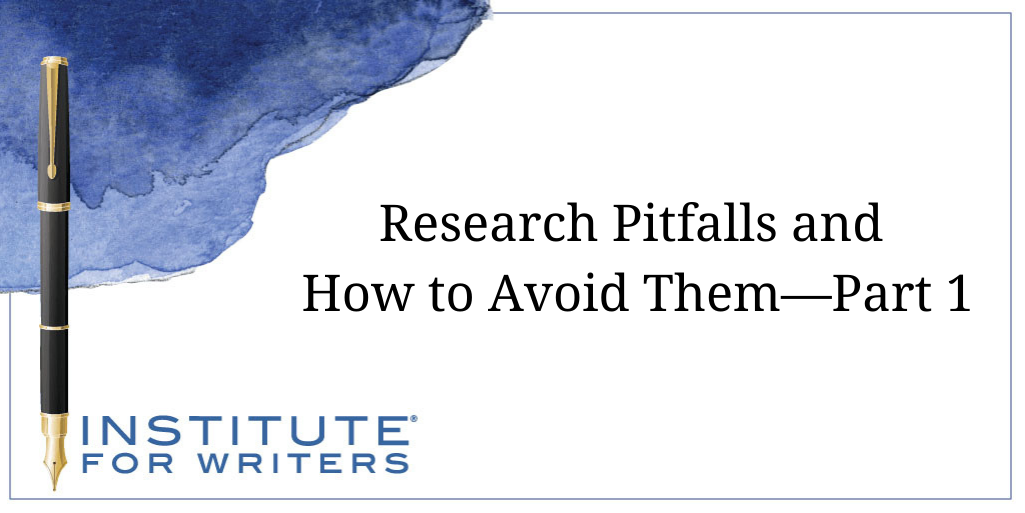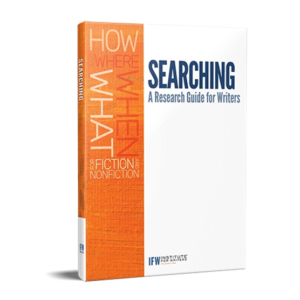1000 N. West Street #1200, Wilmington, DE 19801
© 2024 Direct Learning Systems, Inc. All rights reserved.

Our October focus is research. Whether you’re writing fiction or nonfiction, research should be an integral part of your writing process. Of course, none of us want do all that research only to end up with a pile of rejection letters, so today we bring you Part 1 of Research Pitfalls and How to Avoid Them by Paula Morrow.

Nonfiction can be not only bread and butter but even chocolate cake for the professional writer. Fact-based articles provide a consistent and reliable income stream as well as an ever-growing list of credits. When editors recognize your name and trust your work, you’ll find yourself increasingly in demand. Eventually, you may reach the point where it’s no longer necessary to query; an editor with a specific need will contact you directly to commission an article or even a book.
Such a position must be earned, of course, and several factors contribute to this kind of writer-editor relationship. First and foremost is trust. The editor wants to know that you write well, that you meet deadlines—and above all that your nonfiction is accurate.
Editors know what they want; they also know what they don’t want. The following list is an editor’s-eye view of research pitfalls, top turnoffs that will lead to a form rejection, as well as remedies to help you achieve most-favored-author status.
Every editor says it: “Don’t send me an encyclopedia article!” What does that mean? For a reliable, authoritative overview of a topic, the encyclopedia is a great place to start—a compendium of facts about your subject. Your article, however, is not the facts themselves. It’s what you do with the facts.
You’ve identified a fascinating topic that suits an upcoming theme in one of your favorite magazines. You’ve read the Wikipedia article for a general overview and looked at the list of references at the bottom of the page. You’ve done a Google search, found over a hundred websites that relate to the topic to a greater or lesser degree, and spent several hours browsing sites and downloading or printing the most pertinent pages. You’ve even organized your notes into a logical outline. Now what?
Tempting as it may be, this is not the time to start writing. Collecting information is your first step, but finding it isn’t the same as using it. You’ll need to shape your raw facts into a bigger picture, while vetting the details for accuracy and reliability. You must understand the material yourself in order to reorganize it in a way that is logical and accessible to your target audience. As a writer you will come up with your own unique, focused, individual presentation.
A red flag that you may be simply repeating information you’ve gathered, without internalizing it, is the use of many passive verbs in your manuscript. Scholarly writing has a distinctive style, with formal vocabulary, complex sentence structure, and heavy use of passive voice. (“The subjects were divided into groups.” “The results were recorded.”) This works for academia—not for the general reader. You need to know your topic well enough to explain it in your own words.

One offshoot of the list-of-facts article is the internally inconsistent article. I once received a lively, appealing submission about a common but little-noticed animal with a funny name and amusing habits. In discussing the creature’s diet, the author called it a vegetarian. Two pages later in the manuscript, the animal ate an earthworm. How could this be? The obvious inference is that in consulting several sources, the author had picked up conflicting material and had failed to notice the discrepancy.
Internal contradictions happen more often than you might expect. A responsible author reconciles any apparent conflicts by doing further research. If the writer can’t explain the discrepancy, then the manuscript is not ready to submit. Note, though, that it’s not fair to eliminate information just because it seems contradictory; your readers deserve accuracy. Sometimes it’s not possible to say which of two or more conflicting sources is correct. It’s better to present them both and explain that opinions differ, rather than to delete one for simplicity, resulting in an article that’s misleading and possibly wrong.
It’s been said that a job applicant might have ten years’ experience or might have the same year of experience ten times. By the same token, a bibliography might have ten sources or might have the same source ten times. I’ve seen bibliographies that contain 14 or 15 references without a single authoritative, in-depth source. A profile of a historical figure accompanied by a bibliography listing ten different biographical dictionaries (or ten superficial websites) will not inspire confidence in an editor and is not likely to result in a sale. Bear in mind that editors do not consider Wikipedia appropriate for a bibliography. It’s a helpful place to start your research, but what you find there will need to be verified from an independent, authoritative source; cite the authoritative source instead.
Thanks to interlibrary loans, researchers are no longer limited to materials accessible by mouse click or within driving distance. Online catalogues open up the world’s libraries. One place to start is WorldCat.org. This library catalog, searchable from your computer, contains over 2 billion records from libraries worldwide. Before doing a search, type in your zip code. The search results will list libraries that own each item, helpfully arranged by distance from you in miles.
After identifying the resources you need, you can request them through your local library. Or if you prefer, you may choose to drive to a library that has a particularly rich collection on your topic and go through the materials in person.
In addition to libraries, you’ll find a wealth of information by seeking out appropriate museum collections, archives, societies, and other organizations dedicated to your topic. If you’re writing about 19th century clothing, it’s worth visiting a costume museum to examine samples. For a story featuring a printing press, make the trip to see one in action, hear the clatter, smell the ink. To complete an article about training guide dogs, interview an actual trainer and meet her dogs. Librarians, curators, and experts in the field are usually delighted to answer thoughtful questions.
For more insider information on what editors are NOT looking for in your well-researched submissions, join us next week for part 2 of Research Pitfalls and How to Avoid Them.
Paula Morrow has been a children’s literature specialist for over 30 years and still enjoys each new day in the world of children’s books and reading. Currently the editor of Highlights Hello magazine, she was formerly Executive Editor of Ladybug and Babybug magazines and edited titles for Cricket Books. Before becoming an editor, she was a children’s librarian. Before that she was a reader. She holds an MA in Library Science and a PhD in American Literature.
1000 N. West Street #1200, Wilmington, DE 19801
© 2024 Direct Learning Systems, Inc. All rights reserved.
1000 N. West Street #1200, Wilmington, DE 19801
© 2024 Direct Learning Systems, Inc. All rights reserved.
1000 N. West Street #1200, Wilmington, DE 19801
© 2024 Direct Learning Systems, Inc. All rights reserved.

1000 N. West Street #1200, Wilmington, DE 19801
© 2025 Direct Learning Systems, Inc. All rights reserved.

1000 N. West Street #1200, Wilmington, DE 19801
©2025 Direct Learning Systems, Inc. All rights reserved. Privacy Policy.
5 Comments